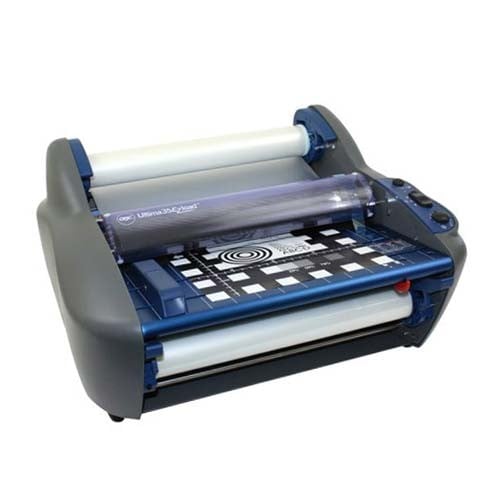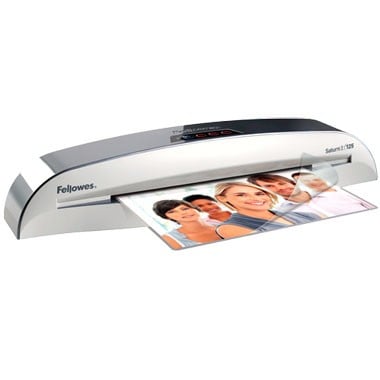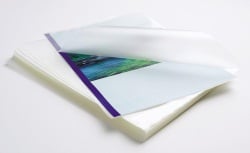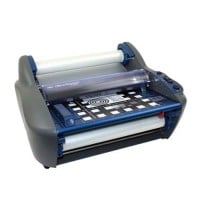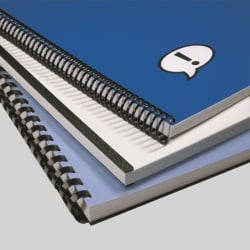MyBinding Knowledge Base
- Binding (248 Article)
- General Binding (42)
- Plastic Comb Binding (57)
- Fastback Binding (59)
- Perfect Binding (2)
- Modular Punching (8)
- Zipbind (3)
- Twin Loop Wire (13)
- Coil Binding (22)
- Thermal Binding (14)
- Strip Binding (1)
- VeloBind (4)
- Binding Covers (14)
- Proclick Binding (10)
- SureBind (4)
- Screw Post (2)
- Hole Punches (2)
- Staplers (4)
- Komtrak Insprial Binding (2)
- Paper (1)
- Rhin-O-Tuff (5)
- Binding Machines Comparison (17)
- Laminating (109 Article)
- General Laminating (26)
- Roll Lamination (16)
- Pouch Lamination (36)
- Pouch Board Laminator (3)
- School Laminator (3)
- Foil Laminating (3)
- Royal Sovereign Laminators (10)
- Laminators Comparison (3)
- Boards (11 Article)
- Bulletin Boards (3)
- Whiteboards (5)
- Chalkboards (1)
- Paper Shredders (44 Article)
- General Shredding (35)
- Industrial Shredders (1)
- Cross-Cut Shredders (2)
- Cardboard Shredders (1)
- Multimedia Shredders (1)
- Personal Shredders (1)
- High Security Shredders (2)
- Ring Binders (9 Article)
- Specialty Binders (2)
- Reinforced Paper (1)
- Health Care Punched Paper (1)
- Perforated Paper (2)
- View Binders (1)
- Index Tabs (9 Article)
- Index Tab Dividers (2)
- Copier Tabs (4)
- Pocket Folders (1)
- Custom Index Tabs (1)
- Pre-Printed Index Tabs (1)
- Paper Handling (37 Article)
- Paper Folders (9)
- Paper Joggers (2)
- Guillotine Cutters (4)
- Rotary Trimmer (3)
- Electronic Paper Cutters (1)
- Corner Rounders (2)
- Paper Scoring (2)
- Paper Drill (2)
- Booklet Makers (3)
- Stack Cutters (1)
- Paper Handling Equipment Comparison (5)
- ID Accessories (12 Article)
- Badge Holder (1)
- Lanyards (8)
- Badge Reels (1)
receive
$5off
*On order $25 or more.
What are the different parts of my paper folding machine? How do they work?
If you have a paper folding machine or are considering buying one, it is helpful to have an understanding of how a paper folder works and the parts that are involved. By understanding the different parts used in the folding process, it is easier to troubleshoot problems and properly set up your paper folding machine. This article will provide a quick overview of five components that are common to almost all paper folders and will explain their role in the paper folding process.
- Input Tray: The first part that you will use in the paper folding process is the input tray. This is where you stack the sheets that you are going to need to fold. Depending on your folder, the input tray may hold a few sheets or may hold a few hundred sheets. Almost all paper folder input trays have a skew adjustment to help you make sure that you are feeding your sheets squarely into the document. If your folded documents are not coming out square, this is one possible place to make an adjustment.
- Pickup Roller: The first part of the paper folding machine to touch your documents is the pickup feed roller or rollers. This set of rollers is often larger than the other rollers used in your paper folder. These rubber rollers are used to pick up the sheets of paper from the input tray and feed them into the folder. Almost all desktop folding equipment uses friction feed rollers. Some more expensive commercial grade paper folders will use either air feed or suction feed to assist in feeding thicker stocks.
- Fold Rollers: After the document is picked up by the pickup roller, it is passed along to the fold rollers inside the paper folding machine. These rollers help to keep the documents moving in a straight path inside the machine. These rubber rollers are usually smaller than the pickup roller and can wear out over time. These rollers can also become less effective over time with the buildup of paper dust. A simple solution of gentle soap and water can do wonders to renew these rollers if they become covered in dust.
- Fold Plates: Every paper folder will have one, two or more fold plates depending on the types of folds that the folding machine is capable of producing. The paper will be fed into these fold plates and it will hit a stop at the end of the plate that will turn the paper around and cause the paper to fold. Cheaper folding machines require you to manually adjust the stop at the end of these fold plates. If you have a folder with this type of configuration, it is essential to get the plate absolutely square for your fold to be straight. If you have a more expensive folding machine, the movement of the paper stops might be automated or controlled by a simple knob. This makes the setup of the paper folding machine much easier.
- Output Tray: After the document has traveled through the folder and through all of the fold plates, the folded document will be spit out of your folding machine into the output tray. Depending on the model of folding machine you have, the output tray may act like a conveyor belt or a bin. Conveyor belt style folders tend to take up more room but are easier to use. Bin style paper folding machines take up less room but on larger jobs your documents can end up pushed inside of each other which can take time to correct.
Hopefully after reading this article you have a better understanding of how your paper folder works and the parts that go into folding your documents. Next time you go to use your paper folder or your folder has problems, you will be better equipped to understand what is happening and what part of the folder might need to be adjusted.
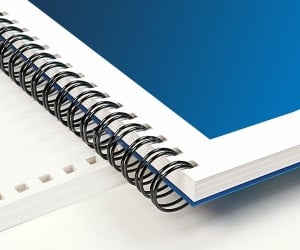
< Over the years, a number of customers have asked me whether they can use twin loop wire with their plastic comb binding machine. These customers often don’t want to have to buy a brand new machine but like the look and feel of twin loop wire binding. However, the answer to their question isn’t as simple as it seems. You see, they actually do make twin loop wire that is designed to work with the plastic comb binding hole pattern. With that said, if you want to use these wires you are going to need a way to close the wires. What is Spiral-O Wire? Let me explain a little bit more…There is a product that we carry called Spiral-O Wire. This wire has 19 loops and is designed to work with the hole pattern from a plastic comb binding machine. Spiral-O Wire is sometimes called Wire Combs or Ibico Wire and was originally designed for use with some of the older Ibico binding machines. A number of the older Ibico plastic comb binding machines also included a twin loop wire closer on the front of them to allow users to use both plastic combs and wire. This 19 loop wire was designed for this purpose. What Equipment is Needed? As the Ibico brand has been phased out by GBC and all of the older Ibico plastic binding machines have been replaced with new models, they no longer have the twin loop wire closer on the front of them. This presents a problem in trying to use these spiral-o wires since you can’t use the wires without a way to close them. One of the only options left is to purchase a Twin Loop wire closer. However, since twin loop wire closers are not incredibly cheap this option usually only appeals to users who have larger electric plastic comb binding machines. Otherwise, it is often advisable to simply buy a low end 3:1 pitch twin loop wire binding machine (the supplies are cheaper). This being said, if you have one of the older Ibico binding machines that has a wire closer included you are in luck. The Spiral-O binding supplies that we carry will work perfectly with your machine and you will be able to use both plastic combs and wire depending on your needs. These Spiral-O binding supplies are available in Black, Silver, White, Blue and Red and in sizes up to 1″ in diameter. If you aren’t sure what type of wire binding supplies that you need to work with your machine simply give us a call. Our trained sales representatives will be glad to help you find the correct supplies for use with your machine.(Read More)
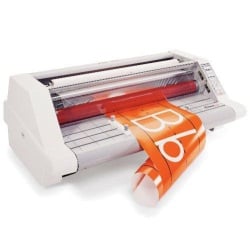

Loading...


